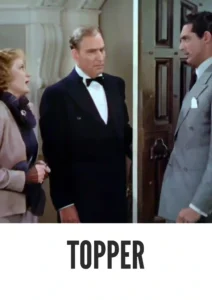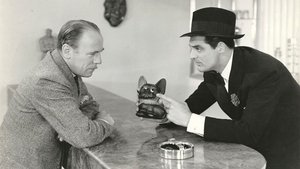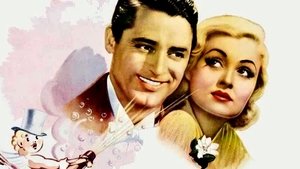Contact: [email protected]
Video Sources 0 Views
- Watch trailer
- Topper


Synopsis
Table of Contents
ToggleReview: In Topper (1937) – A Whimsical Supernatural Comedy Enlivened in Vivid Color

Introduction
“In Topper” (1937) is a delightful journey into the realms of the supernatural, infused with whimsy, charm, and a generous dose of humor. In this review, we’ll delve into the significance of this early colored film, exploring its impact on audiences and its enduring appeal in the realm of comedy.
Check The Full Colorized Movies List
Check Our Colorized Movies Trailer Channel
Understanding In Topper 1937: Director, Cast, and Genre
Directed by the visionary Norman Z. McLeod, “In Topper” (1937) showcases his knack for blending fantastical elements with witty storytelling. The film boasts a talented cast, including Cary Grant, Constance Bennett, and Roland Young, whose impeccable comedic timing brings the madcap adventures of Topper and his ghostly companions to life. Blending elements of comedy, romance, and fantasy, “In Topper” (1937) invites audiences to suspend disbelief and embrace the joyous absurdity of its supernatural premise.
Exploring the World of In Topper 1937: Plot and Characters
At its heart, “In Topper” (1937) follows the misadventures of a mild-mannered banker, Cosmo Topper, who finds his life turned upside down when he encounters the ghosts of a mischievous couple killed in a car accident. As Topper reluctantly becomes embroiled in their otherworldly antics, he discovers a newfound zest for life and a sense of liberation he never thought possible. Along the way, he encounters a cast of eccentric characters who add to the film’s comedic hijinks and heartwarming moments of self-discovery.
The Art of Film Colorization
Film colorization serves as a transformative tool that enhances the visual experience of classic movies, breathing new life into timeless stories and captivating audiences with vibrant hues. By digitally adding color to black and white films, colorization allows viewers to immerse themselves in the rich tapestry of cinematic worlds, exploring every nuance and detail with fresh eyes and renewed appreciation.
Early Colored Films: A Brief History
The history of colored films traces its roots back to the early days of cinema, with filmmakers experimenting with various techniques to add color to their creations. From hand-tinted frames to early Technicolor processes, the evolution of colored film has been marked by innovation and ingenuity, paving the way for the development of modern colorization techniques that continue to captivate audiences to this day.
In Topper 1937 and Its Early Colored Version
The decision to release “In Topper” (1937) in a colorized format was met with both excitement and trepidation. While some welcomed the opportunity to experience the film in vibrant color, others expressed concerns about the potential impact on its visual aesthetic. Nevertheless, the early colored version of “In Topper” (1937) offers viewers a fresh perspective on the whimsical world of Topper and his ghostly companions, enhancing its visual appeal and immersing audiences in its delightful charm.
The Debate Over Film Colorization
The debate over film colorization continues to divide audiences and critics alike, with proponents praising its ability to breathe new life into classic movies and introduce them to a new generation of viewers, while detractors argue that it compromises the artistic integrity of the original work and diminishes its historical significance. As the debate rages on, filmmakers and audiences alike are left to ponder the merits and drawbacks of colorization in the ever-evolving landscape of cinema.
Examining In Topper 1937 as an Early Colored Film
As with any colorized classic, the impact of colorization on “In Topper” (1937) is a matter of personal interpretation. Some may argue that it enhances the film’s visual appeal and immerses viewers in its whimsical world, while others may feel that it detracts from the stark beauty of the original black and white version. Regardless of one’s stance on the issue, there’s no denying the enduring power of “In Topper” (1937) as a timeless comedy that continues to captivate audiences with its witty humor and charming characters.
Influence and Legacy: In Topper 1937’s Impact on Cinema
“In Topper” (1937) has left an indelible mark on the world of cinema, inspiring countless filmmakers and captivating audiences with its timeless tale of laughter and love. From its unforgettable performances to its whimsical storytelling, the film continues to resonate with viewers of all ages, reaffirming its status as a beloved classic of the comedy genre.
Director’s Cinematic Legacy: Beyond In Topper 1937
Norman Z. McLeod’s influence extends far beyond “In Topper” (1937), with a diverse body of work that continues to captivate audiences around the globe. From “The Secret Life of Walter Mitty” to “Horse Feathers,” McLeod’s films are celebrated for their wit, charm, and irreverent humor, solidifying his legacy as one of the preeminent directors of Hollywood’s Golden Age. Through his groundbreaking work, McLeod has left an indelible imprint on the world of cinema, inspiring generations of filmmakers to follow in his footsteps.
Themes Explored in In Topper 1937
“In Topper” (1937) explores a myriad of themes, from the transformative power of friendship to the liberating nature of embracing the unknown. Through its whimsical narrative and memorable characters, the film invites viewers to embrace life’s unpredictability and find joy in the unexpected. As audiences immerse themselves in the madcap world of “In Topper” (1937), they are reminded of the magic that lies in the everyday and the importance of seizing the moment with open arms.
Reception and Controversy Surrounding In Topper 1937
Upon its release, “In Topper” (1937) received widespread critical acclaim, with many praising its witty humor, charming performances, and imaginative storytelling. However, the decision to release the film in a colorized format sparked debate among purists, reigniting the age-old discussion surrounding film preservation and artistic integrity. Despite the controversy, “In Topper” (1937) remains a beloved classic that continues to resonate with audiences of all ages, reaffirming its status as a timeless masterpiece of the comedy genre.
Where to Watch In Topper 1937 Online
For those eager to experience the whimsical world of “In Topper” (1937), the film is readily available on popular streaming platforms such as Netflix, Amazon Prime, and Hulu. Whether you choose to watch it in its original black and white format or the early colored version, “In Topper” (1937) promises to whisk you away on a magical journey filled with laughter, love, and ghostly encounters.
FAQs About In Topper 1937
Q: Is “In Topper” (1937) based on a true story? A: No, “In Topper” (1937) is a fictional comedy based on the characters created by novelist Thorne Smith.
Q: Who are the main actors in “In Topper” (1937)? A: “In Topper” (1937) features an ensemble cast led by the talented Cary Grant, Constance Bennett, and Roland Young, whose impeccable comedic timing brings the madcap adventures of Topper and his ghostly companions to life.
Q: What awards did “In Topper” (1937) win? A: While “In Topper” (1937) did not win any major awards, it received critical acclaim for its witty humor, charming performances, and imaginative storytelling.
Q: Why was “In Topper” (1937) released in a colorized format? A: The decision to release “In Topper” (1937) in color was made to introduce the film to a new generation of viewers and enhance its visual appeal for modern audiences. While the choice to colorize the film sparked debate among purists, it ultimately allowed “In Topper” (1937) to reach a wider audience and ensure its continued relevance in the annals of cinematic history.
Conclusion
“In Topper” (1937) remains a timeless classic that continues to captivate audiences with its whimsical humor, charming performances, and imaginative storytelling. Whether viewed in its original black and white format or the early colored version, the film offers a delightful escape into a world where ghosts roam freely and laughter reigns supreme. So, whether you’re a seasoned cinephile or a casual moviegoer, take a moment to revisit “In Topper” (1937) and experience the magic of a bygone era brought to life in vivid color.













